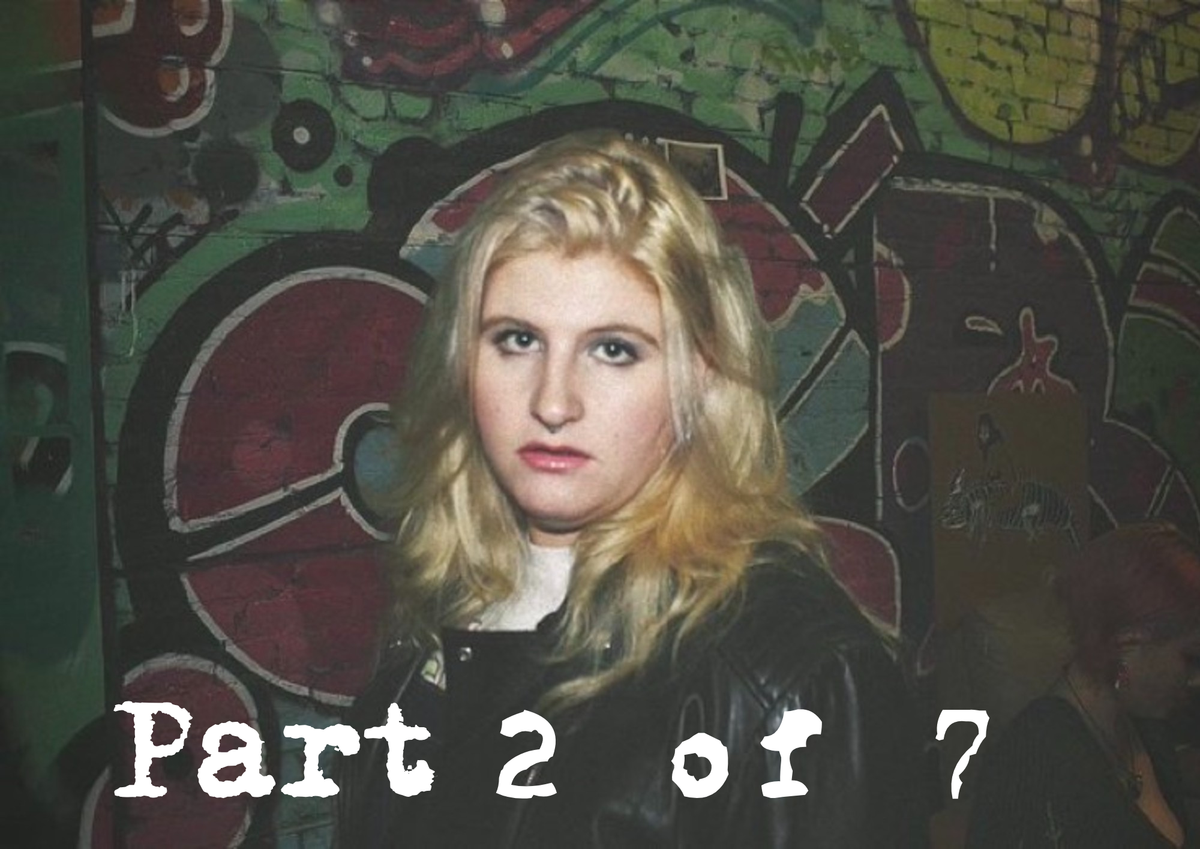14 Weird Questions With Louise Weard, Part 2 of 7
The filmmaker speaks to The Needle about trans culture and trans cinema in a long-form interview. This is The Needle's latest culture coverage.

The filmmaker speaks to The Needle about trans culture and trans cinema.
By Jane Migliara Brigham
One of the latest, (and as I have argued, one of the greatest) recent pieces of trans cinema is Louise Weard’s Castration Movie Anthology II. For The Needle’s culture coverage, I spoke to Weard at length about the film, what got her into film making, and other things.
Weard's director statement for the film opens with this paragraph.
“I sit with my co-producer co-star Dakota Blais with my Sony TRV330 pointed at my 720i Sony TV’s screen.
We are in the midst of filming the backing track to a scene that complements our characters’ prior moment together in the RV for Chapter 3 of Castration Movie.
On the TV, Trump signs executive orders one after the other for hours on end. I hurriedly ask Dakota to toss me another Hi8 tape.
A few minutes later, as co-producer co-star Aoife Josie Clements enters the apartment, we yell Shush! as we hear the words “Defending Women from Gender Ideology…” and I zoom the camera in on the pen.
Trump lets out a deflating “Oooo” and then everyone on TV is ushered out of the room. No fanfare or comment for the biggest rollback of transgender rights in the USA to date.
We watch this unfold knowing that our country will be soon to follow.
I wanted to ensure I had that moment, in its stark lived entirety, captured on camera to place exactly where we begin with the second half of Castration Movie as the narrative jumps forward a year later from the events of Part 1.”
To understand more surrounding the woman behind the film, this article is Part 2 (of 7) in The Needle’s series of articles called “14 Weird Questions with Louise Weard.”
In the style of her work, I have done the minimum amount of editing needed to immerse the reader in the conversation.
To view all parts of the interview, click below:
Full Interview Part 1 Part 2 Part 3 Part 4 Part 5 Part 6 Part 7
Question 3
Jane: So for the audience, film semiotics is what exactly?
Louise: It's the study of the space of the cinema and the apparatus and the camera and the projector. And then how the viewers are all interacting with each other. So I engage with a lot of Freudian and Lacanian analysis of the screen image and how we relate to what's going on on-screen.
For a quick example, Lacan talks about the idea of the mirror stage as a way of our first self identification, where we recognize ourselves as unique entities. When we watch a movie, we have the idea of shot, reverse shot, which is characters both talking offscreen towards one another. So they're kind of looking to you where you are identifying with the character being spoken to in a way. It brings you into the movie.
It creates that sort of separation. But then you can actually lose yourself in the act of watching a film. So it's all trying to study that side of filmmaking. Unlike a psychoanalytic level, how do the tools of cinema actually work with the way people are engaging with it and wanting it?
This post is for subscribers on the Silver, Gold, Platinum and Diamond tiers only.
Subscribe now and have access to all our stories, enjoy exclusive content and stay up to date with constant updates.
Already a member? Sign in

